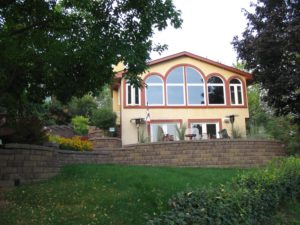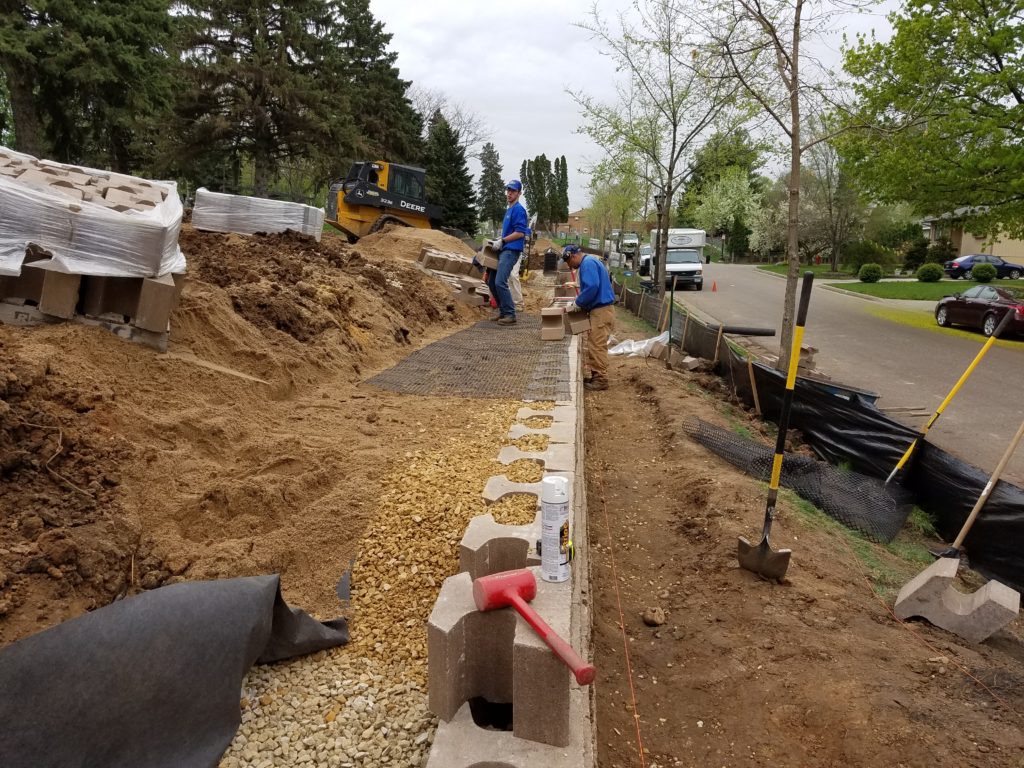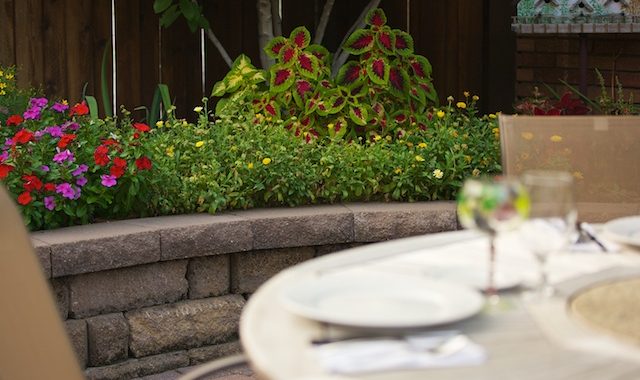You’ve likely heard of retaining walls, but how much do you know about them? Retaining walls are a man-made method of holding back soil or leveling sloped ground to create more usable space. They also help to facilitate the design your outdoor landscape.
What materials are retaining walls made from?
Historically, retaining walls were made of wood or stone, both of which are still used in the creation of retaining walls today. Wood-built walls are the most economical and have a natural aesthetic. They are, however, susceptible to moisture and can warp and decompose over time – compromising the integrity and greatly reducing the lifespan of the wall. Stone walls are highly-aesthetic but not nearly as economical as wood retaining walls. Construction of a stone retaining wall is a labor-intensive undertaking and while they are often built to prevent erosion, they are ironically susceptible to it.
Another retaining wall option is a cast-in-place or mortared wall. Available in a variety of finishes – veneers, bricks, flagstones – they a popular choice. Mortared walls are rigid, however, which doesn’t make them a great choice in locations susceptible to weather extremes or earthquakes and they can be incredibly costly to build.
Perhaps the most durable retaining wall choice is a segmented or interlocking block wall (SRW). Similar to techniques implemented in the construction of the Great Wall of China and the Egyptian pyramids, SRW’s are a completely mortarless and maintenance-free system. SRW’s can be custom-designed in a variety of shapes, sizes, colors and textures.
How do I know if I need a retaining wall?
 Have you noticed after a heavy rain that sand and gravel from your yard wash into your driveway, onto the sidewalk or down the street? A retaining wall can prevent erosion and ensure plants and soil stay properly in place.
Have you noticed after a heavy rain that sand and gravel from your yard wash into your driveway, onto the sidewalk or down the street? A retaining wall can prevent erosion and ensure plants and soil stay properly in place.
Would you like to manage the flow of rainwater and utilize it for gardening and landscaping? A retaining wall can be designed – in combination with a rain garden – to both slow the flow of rainwater and utilize excess rainwater, preventing runoff into streets, sewers, rivers and lakes.
 Do you wish to convert a sloping part of your yard into usable space? A retaining wall is a practical way to do just that! Once-unusable space becomes a quiet sanctuary for landscaping, a great place for seating and entertaining or more space for the kids to run and play.
Do you wish to convert a sloping part of your yard into usable space? A retaining wall is a practical way to do just that! Once-unusable space becomes a quiet sanctuary for landscaping, a great place for seating and entertaining or more space for the kids to run and play.
Are you looking for ways to increase the aesthetic of your landscape? A retaining wall can add that extra splash of pizazz. Convert a boring, flat backyard into your private oasis – complete with a retaining wall firepit surround, raised flower beds or terraced gardens. The options here are only limited by your imagination!
Whatever you do, don’t go at it alone! Retaining wall construction requires a high-level of planning and engineering so be sure to enlist a professional.

If you would like to explore the option of a practical or aesthetic retaining wall on your property, we would love to speak with you. Don’t hesitate to contact us!
